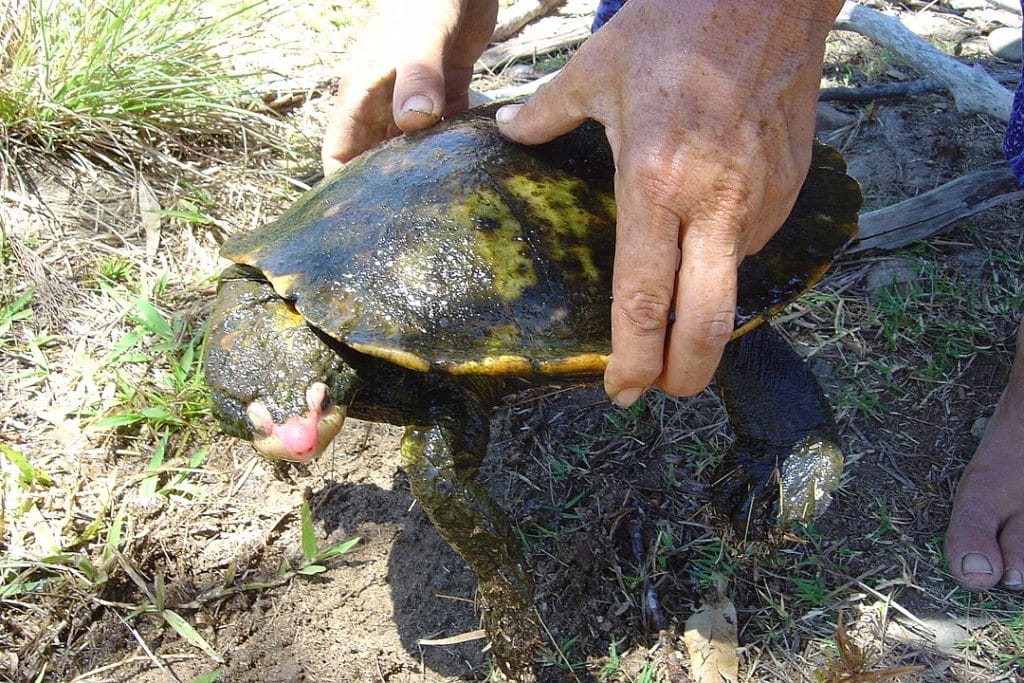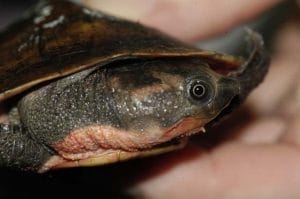Elseya irwini (Irwin’s Snapping Turtle)
Home > Turtle Database > Elseya irwini (Irwin’s Snapping Turtle)

Elseya irwini is a unique species of freshwater turtle found primarily in Australia. Known for its striking appearance, this species is notable for its relatively large size and distinctive shell markings. Despite its local abundance, it faces threats due to habitat alteration and water pollution.
Native To These Regions
Queensland (Australia)Native Turtle Species Map – Find Turtles by Region
Scientific Classification
- Kingdom: Animalia
- Phylum: Chordata
- Class: Reptilia
- Order: Testudines
- Family: Chelidae
- Genus: Elseya
- Species: Elseya irwini
Common Names
- Irwin’s Snapping Turtle
- Elseya Turtle
This Hilarious Turtle Book Might Know Your Pet Better Than You Do
Let’s be real—most turtle care guides feel like reading a textbook written by a sleep-deprived zookeeper.
This one’s not that.
Told from the snarky point of view of a grumpy, judgmental turtle, 21 Turtle Truths You’ll Never Read in a Care Guide is packed with sarcasm, sass, and surprisingly useful insights.
And hey—you don’t have to commit to the whole thing just yet.
Grab 2 free truths from the ebook and get a taste of what your turtle really thinks about your setup, your food choices, and that weird plastic palm tree.
It’s funny, it’s honest, and if you’ve ever owned a turtle who glares at you like you’re the problem—you’ll feel seen.
Identification
Description
The Elseya irwini has a broad, flattened carapace that ranges in color from dark brown to black, with a lighter underside. The species’ shell is often covered in algae, giving it a greenish tint. It also has a large head with powerful jaws adapted for snapping.
Sexual Dimorphism
Females tend to be larger than males, with wider, more dome-shaped shells, while males exhibit longer, thicker tails, which help in distinguishing between sexes.
Check more turtles from the Elseya genus
Native Origin and Distribution
Geographical Range
This species is native to the Fitzroy River catchment in Queensland, Australia, where it inhabits both main river channels and smaller tributaries.
Preferred Habitat
Elseya irwini prefers slow-moving freshwater rivers and deep waterholes with abundant submerged logs and aquatic vegetation. The species often seeks refuge in these areas to avoid predators.
Behavior
Feeding Habits
Primarily herbivorous, the Irwin’s snapping turtle feeds on aquatic plants, but will occasionally consume small invertebrates. Its diet changes depending on food availability in its environment.
Predators
Young turtles are vulnerable to predation from birds, large fish, and other reptiles. Adult turtles, thanks to their size and tough shells, have fewer natural predators.
Reproduction
Breeding Season
The breeding season for Elseya irwini typically occurs from late winter to early spring (July to September), when water temperatures begin to rise.
Reproductive Method
Females lay clutches of 10-20 eggs on riverbanks, which hatch after an incubation period of about 60 to 80 days, depending on environmental conditions.
Conservation
Extinction Status
Currently, Elseya irwini is listed as Vulnerable on the IUCN Red List.
Threats
The primary threats include habitat destruction from damming and water extraction, pollution from agricultural runoff, and the introduction of invasive species.
Conservation Measures
Conservation efforts focus on protecting its freshwater habitats, reducing water pollution, and ensuring that development projects, such as dams, are planned with the species’ survival in mind.
Economic Importance
While Elseya irwini does not have direct economic importance, its presence contributes to the ecological balance of freshwater ecosystems, supporting biodiversity and water quality.
Interesting Facts
This species was first discovered by Steve Irwin’s father, Bob Irwin, during an expedition in the 1990s. The turtle was named in honor of Steve Irwin, the famous Australian wildlife conservationist. Additionally, the algae growth on their shells can sometimes make these turtles appear completely green!

About Author
Muntaseer Rahman started keeping pet turtles back in 2013. He also owns the largest Turtle & Tortoise Facebook community in Bangladesh. These days he is mostly active on Facebook.














